
Last autumn Tālivaldis Gaumigs, professor emeritus and the founder of the Design Department at the Art Academy of Latvia, was awarded Order of the Three Stars. Being slightly bonkers, as he himself says, about classical music, he explains here what design and art have in common, while freely referring to other creative methods and revealing why he is annoyed by «all the empty talk about design.»
During the past six years Gaumigs, who was awarded the Order for his contribution to Latvian design, also received a life stipend from the State Culture Capital Foundation and the Art Academy of Latvia Award. One can only guess if a genuine dedication to the teaching process for over 50 years and being at the spring of the Academy’s Design Department and founding Latvian Designers’ Union can be measured in official titles. What seems more important is praise by students and colleagues who don’t hesitate to give their appreciation of the master. «You are the father of Latvian design, while we are your children and grandchildren,» said Holgers Elers, the current chair of the Academy’s department of functional design, speaking at the event celebrating the awarding of the Order and Gaumigs’ 85th anniversary, to which the master jokes back that he cannot accept such responsibility. When we had this conversation in his living room, surrounded by various art objects, drinking black tea and eating dark chocolate, it became clear why his contemporaries have always praised his personality and sense of humour.
You studied sculpting and also used to work in the discipline. What made you switch to design education?
I graduated from the Riga School of Applied Arts, which was then called the School of Arts and Crafts, the metalwork department, where my teacher was one of the authors of the stars on the Freedom Monument, Jānis Zibens. He was a very nice person who encouraged me to pursue sculpting. Later I enrolled in the sculpting department of the Academy. During one of the senior years I needed to find a job, and I was offered a teaching position at the School of Applied Arts. So my teaching career began purely out of financial considerations. However, for the entire fifty years I did my job with joy. I am now 85, soon I will be 100, and when I am asked about my life I reply it’s my biggest luck to have been able to meet people like you. I have graduates; I have always been with young people, but not with any people — with creative people. Everyone has their own world with their own ideas; everyone tries to find their own approach, and I have to play along like in a game of chess. Can life be more interesting?
How did you come to founding the Design Department at the Academy?
In the art school I had a colleague named Imants Žūriņš. Being idealistic as we were, we thought that the applied art was in a bad state and that we must start a revolution. We brought down the director, put Žūriņš in his place, but no one was expecting him to go even further with his grand ideas. With admirable ambition he pushed the school in a different direction, and his legacy can still be felt.
Žūriņš had a strong sense of Latvian identity, but he couldn’t stand pseudo–nationalism, the «rag dolls», as later Ziedonis would tease them, and things like that. With big scandals he would kick everyone of the kind out the school and put together a team of skilled professionals, like the architects Georgs Barkāns, Mara Staņa, Marga Spertāle, then a famous costume designer.
Since Žūriņš and I became close during the breaks at the school, and having started the revolution together, he trusted me and soon would direct me towards influential positions. By now we had pushed aside the «rag dolls», but the important part was, where do we go from here? We focused on Scandinavian design. Drinking wine, the two of us, or in a larger crowd, we talked a lot and tried to get access to information, which in the sixties was a tough call; sometimes people would bring something over [from abroad]. Thus we found out what design was.
For me the essence of design is such that when a certain outstanding mind, for instance, Tapio Wirkkala, makes a model, it goes out to be used for several thousand times and in the end the public gets an excellent object for little money. This is what we went for in the School: to create objects that can be used in everyday life in ways previously unthinkable in this context.
In 1964, the dean of the Academy, Leo Svemps, decided that they also needed such a department. When I was asked to join the Academy, I was no longer a rookie, I had a pretty clear idea what to do; the other thing was that — and I am not exaggerating here — everything had to be done from scratch. I said to my colleague Heimrāts [Rūdolfs Heimrāts, the founder of the Textiles Department]: «You have these ladies who’ve been weaving those beautiful rags for 300 years; I have absolutely nothing.»
How did your colleagues at the Academy receive your ideas? Were there scandals like the ones Žūriņš had at the School?
The attitude was… it wasn’t hostile, but they did a lot of nit–picking wherever they could. After all, who wanted something to do with a coffee grinder or stuff like that at the Academy? A well–known art theoretician would talk behind my back, «Their place is in a craft school.» But I had Žūriņš’ schooling and wanted to turn the academic system into a contemporary realm.
When you began in the Academy, they didn’t use the word «design»; you were establishing a «Department of Industrial Art»…
The first title of the program was «artist–constructor»; then «industrial art», which was denigrated as a wrong term, but then I learned that our own Gustav Klucis, who was heavy into design, used the term as early as 1920s. What’s mad is how the word «design» has become so popular and with a blurred meaning. I watch TV and see ten people argue over something where everyone has their own understanding of the thing. A normal person who is not very interested in these things, he knows: design is something good. But what exactly is it? What are its benefits? In the sixties, the word was used among architects and in other narrow circles; nowadays it has worn out and put on everything. We no longer have floriculture but «floral design», or various «nail designs». It annoys me when the word is used for a wrong reason, it is being diluted and in the end no one knows what it actually is. I joke that I myself gradually become an «anti–designer».
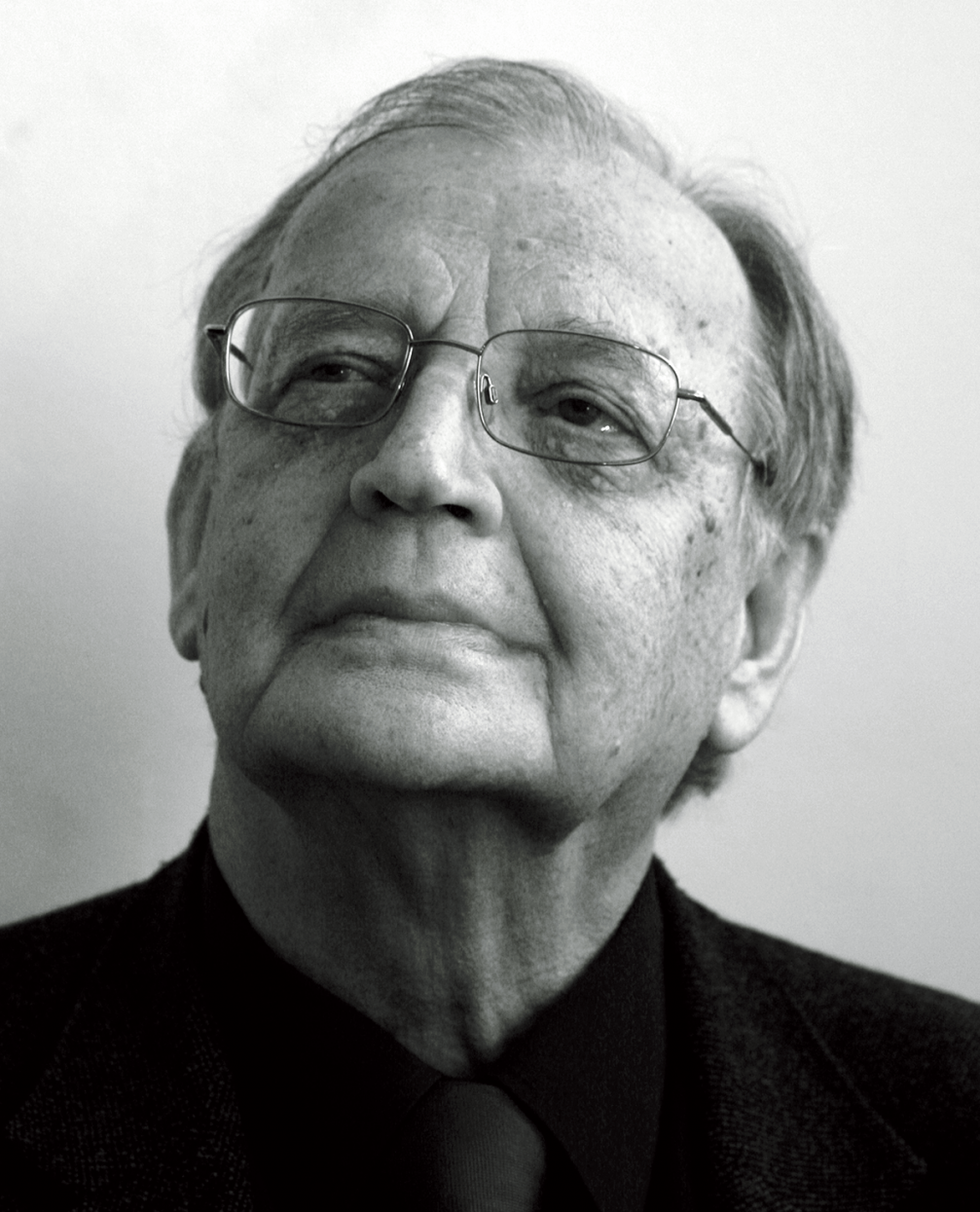
For a normal person, as you call them, it’s enough for an object to have an attractive outer shell to call it design, or even worse, to call it «artsy»…
Why do you need to call it a design? It’s a piece of crap! Going back to Žūriņš, he was harsh and couldn’t stand the national ornaments being thrown in everywhere; he even gave up on using the word «décor».
You received Order of the Three Stars for your «outstanding creative contribution to the art of design and the work with young generations of artists». Designers are often against bringing design and art together, saying that these are completely different forms of creativity. How do you see it?
I would suggest reading how the idea of design was described by one of the most brilliant engineers of our time, the genius Steve Jobs: design is a manmade soul of an object that manifests in its outer layers. How does this soul manifest itself? Here we have to speak about my field of interest — the form. We are surrounded by an immense amount of objects, and they all have a form. I have always said that our basis is a man and an object: creation, arrangement, elimination. Things have forms that leave a powerful impact, and there are forms with a weaker impact or which don’t work at all. If your object’s form doesn’t work, you won’t be able to sell it.
But you can’t get an easy ride just on a visual impression; that is why a proper designer must know not only the outside but the inside as well. That is where the soul begins. In Latvian design, for example, the «Minox» camera — when you pick it up, you feel there is a soul.
We’ve had unpleasant talks about moving designers from the Academy somewhere else, like the Technical University. No way! It’s a great privilege to be together with graphic artists, sculptors, painters. Thus Latvian design acquires a spirit, an atmosphere.
In the design department there have been many graduates who stand out with their provocative and bold works. Jānis Borgs has also written that it was a freer place, having «sneaked past the Soviet conservatism zone which was allotted to the decorative arts». How would you explain this?
It was certainly so. Andris Breže, Ojārs Pētersons, Ivars Mailītis — they are my people! The sixties demanded making a case for social realism, whereas we, surprisingly, would roll the other way. I have always been a defender of modern art. To the rest I would explain that our department has nothing to do with the depiction of real life; we work with production. That a coffee grinder doesn’t need social realism. Meanwhile we put an emphasis on general education — colours, forms. We began with Bauhaus; then went on with the different Mondrians, of which the Academy would keep silent, and that excited the young.
The dean at the time, Leo Svemps, being a pure–blooded painter, was a man of high culture standards and would often have my back. I was also helped by the professor Emīls Melderis, my former teacher from the sculpting department. It turned out they had saved me when authorities came, although they themselves couldn’t do much about it, because they couldn’t compare academic and industrial art. The academic art is largely an interpretation of nature. We in our department don’t interpret; we ourselves create forms.
In your opinion, what is the most important thing to teach a future designer? A sense of form?
The principles of creative work. There are no laws, only principles. I just saw the infamous opera «The Damnation of Faust» by Alvis Hermanis, which was a flop in Paris. Hermanis is an outstanding talent, but I thought, he hasn’t studied with Gaumigs. I can’t stand scaffolding in theatre. Nowadays stages have immense spatial opportunities, but there was this small foreground for actors to play. Jonas Kaufmann, the world–famous tenor, is singing, but he disappears in there. Hermanis knows that scaffolding is bloody boring, so he had brought in the most beautiful girls from the Paris Opera. I’m being arrogant here, but I just want to illustrate how the principles of all arts are similar, something that every freshman should already know. Design aside, one can compare Beethoven and von Trier, and find that the principles are similar. Like contrasts, rhythms…
You mentioned talent. Is it essential for a designer?
By the way, I, like Boriss Bērziņš, put a strong emphasis on it. If someone says one needs one per cent talent and 99 per cent work, he’s a laughing stock. Talent decides everything. When I say this to young students, they begin to brood, «Damn it, who am I? Do I have the talent?» I respond by saying there’s a talent pyramid. Geniuses at the top, and then it goes down the layers. One could say, «If I’m at the bottom, then it’s the end of it!» No! The bottom is the basis, and life needs different sorts of talent. Everyone can’t be genius.
How has the department changed over the years? Do students have different aspirations or motivation to enrol?
There are things that have changed for the better and many areas have been put in order. Also, technology cannot be compared to what there was. But the question of principles is still valid. Quo vadis? I think a school is a school, and in this sense one shouldn’t blur the lines; someone has seen something in the United States; others come in with something else, and they want to introduce it here. No way! We need to choose what is closer to us and bring it to a high standard. It doesn’t mean you can’t do something else, but one needs a profile, a direction. If one has it, everything goes much more professionally. I can’t stand dilettantism. Once students were given a task to make this gadget that you have here [points to an iPhone]. I thought, «My dear colleague, what are you on about? How can a little girl fresh from school have a slightest idea what it is? All she can make is, really, just the outer shell.» Utter dilettantism. The student must be encouraged slowly, directed from simpler things and not made to create an iPod right away. Who can do that? I agree with the German industrial designer Konstantin Grcic: the designer is not an inventor; the designer is a developer of things. Although a very important part, he is still just a part of a team.
But students have always been equally lazy and hardworking. There is this thing, however: the design department never lacked applicants; they are attracted by the practical side of the job.
What should a good design teacher be? You have been esteemed among students; they mention your informal contribution.
Drinking? [Laughs] My principle is to be as much with the students as possible. I trained in Prague for a year; it also made me rethink mutual relationships. If students throw parties, they also invite me. We had practice jobs in beautiful places outside Riga where we would live, eat together; formalities disappeared. I think informal meetings where one can talk are very important. Students become open, say what they don’t like; there is a sense of freedom. We’re all in one gang.
It is very important to keep students on their toes. No matter how many years you’ve been working, you can’t be indifferent; they must be energised. The director Jānis Zariņš has a book on how to train actors, and in it he had to answer a question, «What is the most important thing in teaching students?» And he says, «The most important thing is to start them up.» Like a car. You have to go to them all «wound up» yourself. With me, if someone’s sleeping [in the class], I let them sleep; I have nothing against it.
What does it mean for you that your passion had been acknowledged on the national scale by the Order?
It was absolutely unexpected. But when I think about my life from the sixties when hardly anyone knew what design was, but now it’s all over the place, oh, Lord, I do have a sense of accomplishment. But it’s not just about me. I soon came to a conclusion that I needed a proper team. For 25 years we worked with Pēteris Martinsons; there was Oļģerts Ostenbergs, Aleksandrs Dembo and others. A good squad which you could count on. We could argue through the night, but the good thing was that in the end we’d always agree on what must be done. Dembo said about me, «Tālis is a democratic dictator.» What was my contribution? God or someone else had nevertheless given me a certain talent for leadership; I could manage to bring everyone together.

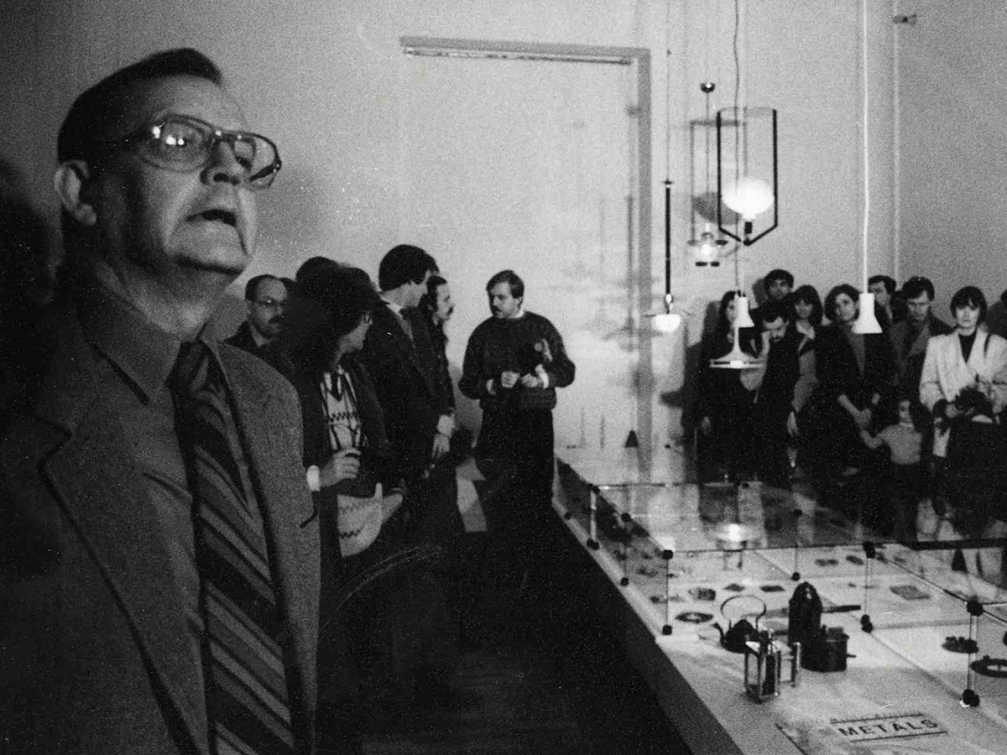
Thanks to the design department, the Academy was joined by people from outside. It is rarely mentioned, but the two–year art construction course played a big role; to increase their qualification, it was attended by people who’d had a taste of what it was like at the VEF plant, in radio construction, heavy machinery. And the radio factory actually had excellent radios! Now I look and think about the «Rīga 110» model and others. Damn, how cool! What elegance! Our students and these workers had classes in the same room; the cell grew completely on its own. Together with Gunārs Glūdiņš we founded the Designers’ Union; I made a platform for the designers’ branch of the Artists’ Union, which was later chaired by Ādolfs Irbīte. We were the beginners.
You mentioned «Rīga 110» radio sets. What else would you like to highlight in Latvian design?
To say that it all began from scratch in the sixties wouldn’t be completely fair. Ādolfs Irbīte began at the VEF during the thirties. Yet at the core of everything has always popular craftsmanship, the sense of creating things. A few years ago Holgers organised a show of Glūdiņš’ bikes and other vehicles. I remember watching and thinking, «How cool! Oh, Lord, it has such a national air about it!» It’s a mechanical device, but those forms and colours… When I see our radio sets, «Blimey, how purely Latvian the design is, with influences from proper craftsmanship coming through — from beautifully woven rags, mittens, also woodwork.»
In your opinion, what must be done to carry Latvian design to the world and promote design understanding and its use here in Latvia?
The Latvian nation will be saved by education. One must speak and write about the design culture, highlighting those who are good. There should be support for those who can do things. Not from the state, though; from the public. It’s naïve to think there’s someone in the government sitting on money, dealing out funds to designers, and if they’re not doing it, they’re a crap government! Everything must begin from the roots; we must self–organise, be more insistent. That’s the only way to exist. Ten times rejected, the eleventh is when you get what you demand.
Meanwhile, culture begins in the family — how you have breakfast with the family, what is the mutual relationship, whether you occasionally lay out a white tablecloth. You can’t drink from a chipped cup. If you take the old Latvian home, all in it was taken care of. We all have to take care of things.
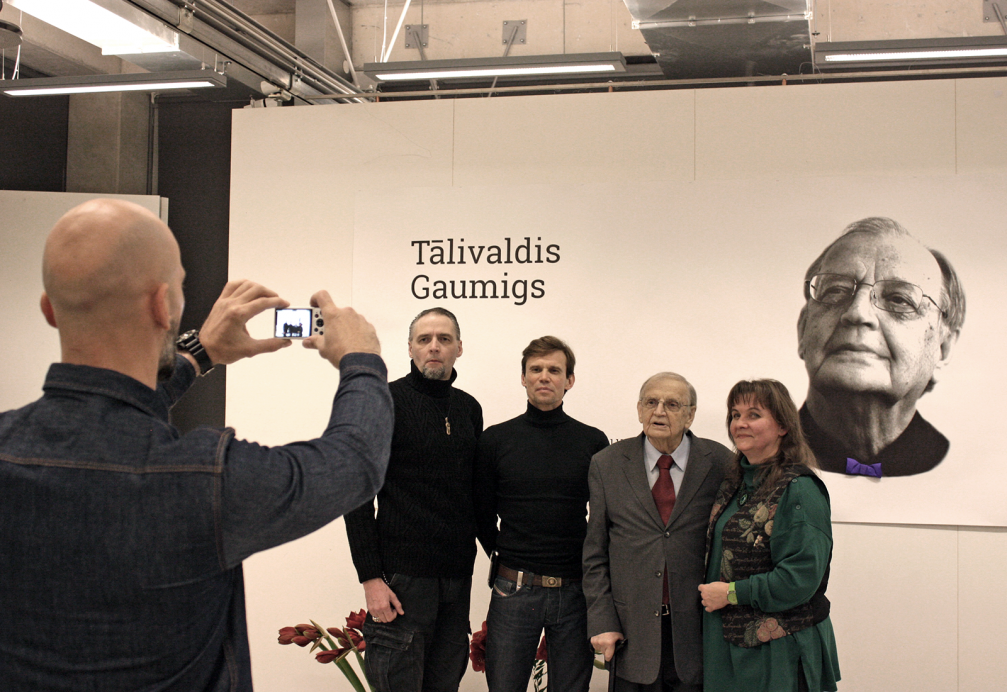

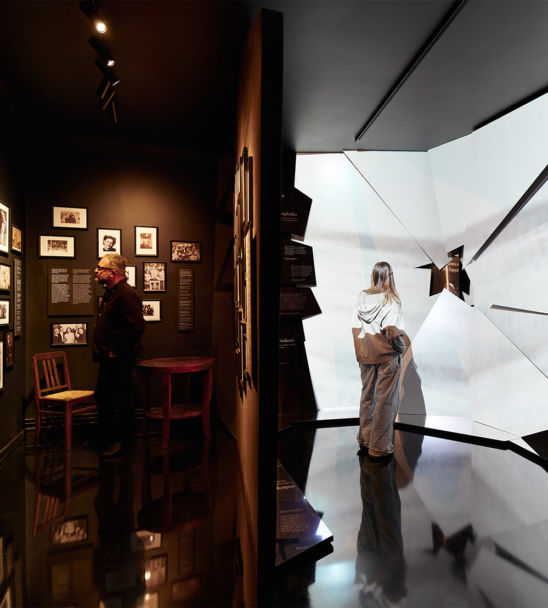
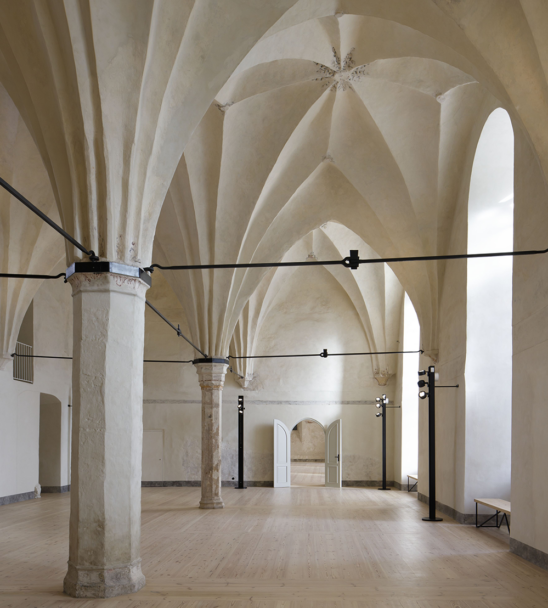


Viedokļi